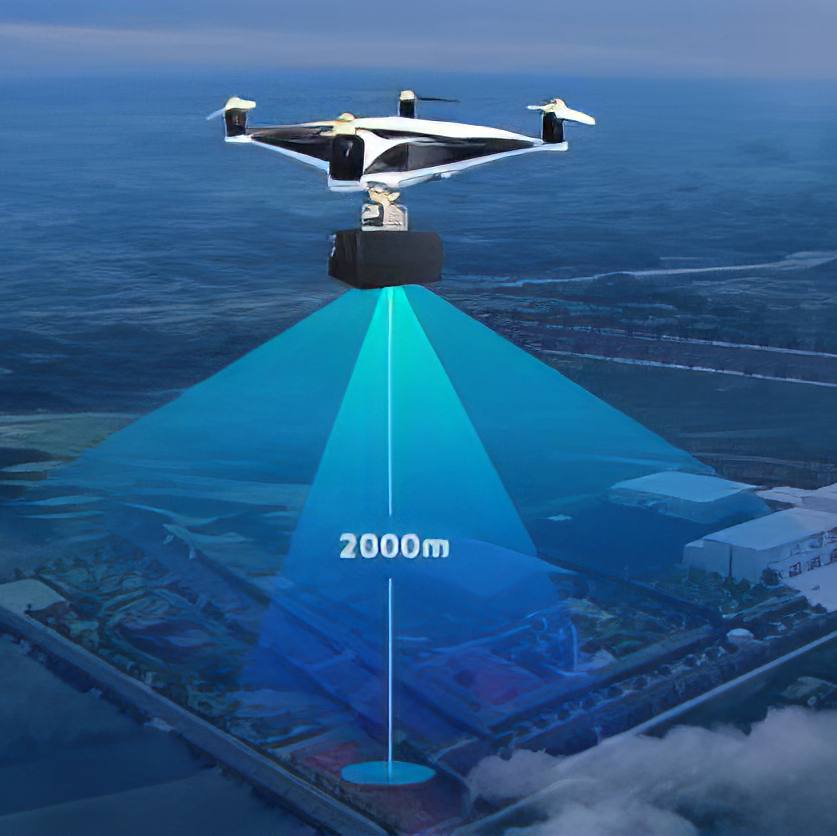Improving the accuracy of laser rangefinders is crucial for various precision measurement scenarios. Whether in industrial manufacturing, construction surveying, or scientific and military applications, high-precision laser ranging ensures the reliability of data and the accuracy of results. To meet the stringent accuracy requirements in different situations, the following methods can effectively enhance the measurement accuracy of laser rangefinders.
Choosing a high-quality laser is fundamental to improving measurement accuracy. A high-quality laser not only provides greater stability but also emits a beam of superior quality. Specifically, the laser beam’s divergence angle should be as small as possible to minimize scattering during transmission, thus reducing signal loss. Additionally, the laser’s output power should be sufficiently high to enhance the beam's intensity, ensuring that the signal remains strong enough even after long-distance transmission. By using lasers with these characteristics, measurement errors caused by beam divergence and signal attenuation can be reduced, thereby improving accuracy.
The design of the receiver directly affects the signal reception capability of the laser rangefinder. To enhance receiver performance, high-sensitivity photodetectors should be selected to capture weaker return signals. The receiver should also have a good signal-to-noise ratio (SNR) to reduce background noise interference in complex environments. Using efficient filters is also critical, as they can filter out unnecessary interference signals, retaining only the useful laser echoes, thus improving measurement accuracy. By optimizing the receiver design, the signal capture capability of the laser rangefinder can be significantly enhanced, leading to improved accuracy.
Signal processing is a key factor in determining measurement accuracy. Advanced signal processing algorithms, such as phase measurement or time-of-flight (TOF) technology, can increase the precision of return signal measurements. Phase measurement calculates distance by analyzing phase differences in the laser signal, suitable for high-precision measurements; TOF technology measures the time taken for the laser to travel from the transmitter to the receiver, ideal for long-distance measurements. Additionally, increasing the number of measurements and averaging the results can effectively reduce random errors, thereby improving the stability and reliability of the measurement results. By enhancing signal processing capabilities, the measurement accuracy of laser rangefinders can be significantly improved.
Optical design plays a crucial role in laser ranging systems. To improve measurement accuracy, the optical system should have high collimation and focusing precision. Collimation ensures that the laser beam remains parallel when emitted, reducing scattering in the air, while focusing precision ensures that the laser beam is accurately concentrated on the target surface and that the return beam precisely enters the receiver. By precisely calibrating the optical system, errors due to beam scattering and reflection can be effectively reduced, thereby improving accuracy.
Environmental factors can significantly affect laser ranging. During measurement, dust in the air, humidity changes, and temperature gradients can interfere with the laser beam’s propagation and the reception of return signals. Therefore, maintaining a stable measurement environment is essential. Dust covers can prevent dust from interfering with the laser beam, and temperature control systems can maintain a stable operating temperature for the equipment. Additionally, avoiding measurement in environments with strong light or multiple reflective surfaces can reduce the impact of ambient light on the laser signal. By minimizing environmental impacts, the accuracy and stability of laser ranging can be improved.
The reflectivity of the target surface directly affects the effectiveness of laser ranging. To improve measurement accuracy, high-reflectivity materials or coatings can be used on the target surface, thereby increasing the strength of the returned laser echo signal. In scenarios requiring precise measurements, specially designed high-reflectivity target plates can further enhance the rangefinder's performance, ensuring the accuracy of the measurement results.
In long-distance measurements, errors may arise due to laser signal attenuation and refraction in the air. To compensate for these errors, distance correction algorithms or correction tables can be used to adjust the measurement results. These correction algorithms are typically based on the operating principles of the laser rangefinder and the specific measurement conditions, effectively reducing errors in long-distance measurements and thus improving accuracy.
By combining the above methods, the accuracy of laser rangefinders can be significantly improved. These methods not only enhance the technical performance of laser rangefinders but also consider environmental and target factors, enabling the rangefinder to maintain high accuracy across a broader range of applications. This is particularly important for fields such as industrial manufacturing, construction surveying, and scientific research, where high-precision data is essential.

Lumispot
Address: Building 4 #, No.99 Furong 3rd Road, Xishan Dist. Wuxi, 214000, China
Tel: + 86-0510 87381808.
Mobile: + 86-15072320922
Email: sales@lumispot.cn
Website: www.lumispot-tech.com
Contact: Lumispot
Phone: +86-15072320922
Tel: +86-510-87381808
Email: sales@lumispot.cn
Add: Bldg 4 No.99 Fu Rong 3rd Road, Wuxi, China